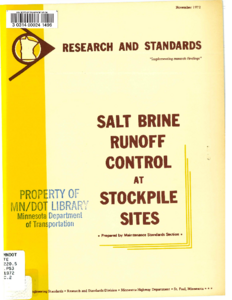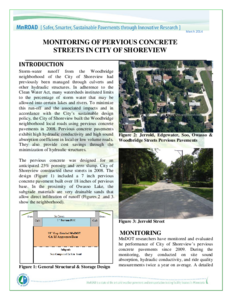Stormwater treatment practices, often referred to as stormwater best management practices (BMPs), require a substantial commitment to maintenance, including regular inspections and assessments. Existing regulations require governmental units to develop a systematic approach for ongoing inspection and maintenance to ensure that they are achieving their desired treatment goals. A lack of maintenance will lead to a decrease in BMP performance and will often result in expensive rehabilitation or rebuild. In 2009, SRF Consulting produced a maintenance guide for the Local Road Research Board (LRRB) (Marti, et al. 2009). In 2023, the LRRB commissioned the University of Minnesota St. Anthony Falls Laboratory to update this guide to reflect new best practices. The Stormwater BMP Inspection and Maintenance Resource Guide (the Guide) is a supplement to the Minnesota Stormwater Manual (MPCA 2023) and will help the reader plan for recommended long-term maintenance activities through guidance on visual inspection, testing, and monitoring methods for identifying what maintenance is needed, and when it is needed. The Guide describes inspection and maintenance for constructed stormwater ponds (both dry and wet) and wetlands, underground sedimentation practices, infiltration practices, filtration practices, bioretention practices, permeable pavements, and stormwater harvesting. In addition, the Guide includes a section on Meeting Stormwater Management Objectives, which provides information on achieving reductions for sediment, phosphorus, nitrogen, metals, chloride, pathogens, and organic chemicals. The Guide also includes Field Inspections Resources, which contains inspection checklists and maintenance activity recommendations for all of the practices listed










